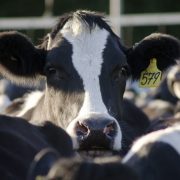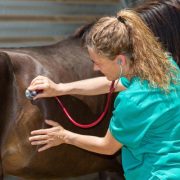Principles of triage and first aid in wildlife casualties
Principles of triage and first aid in wildlife casualties

Requires membership/payment
This article can be accessed via RCVS Knowledge Library Membership (click here).
In our edition of: Aug 2017
In our categories of: exotics
our summary:
Mullineaux, E. (2017) Principles of triage and first aid in wildlife casualties. Companion Animal, 22 (6), pp. 350-356
It is a regulatory, legal and ethical requirement that veterinary professionals provide emergency care to all indigenous wildlife casualties. Being able to quickly decide which cases are suitable for treatment, rehabilitation and eventual release and which should be euthanised is essential for ensuring animal welfare.
In wildlife medicine the term triage is used to describe the process of differentiating between casualties that will have a good chance of making a full recovery and surviving in the wild, and those that need to be euthanised.
This paper gives an overview of the factors involved when making this triage decision. These include: the ability to return the casualty to the wild in a physical condition that allows it to survive in an equivalent way to other members of its species; the facilities available for rehabilitation; the availability of suitable release sites; any legal issues, e.g. is a licence required for keeping in captivity or eventual release; and available funding to cover the initial and ongoing costs of care and rehabilitation. If these considerations cannot be met properly then euthanasia should be the preferred option rather than providing inappropriate care.
Common reasons for immediate euthanasia of wildlife casualties given include: behavioural abnormalities, inability to feed, loss of hearing or vision, permanent feather damage or loss of waterproofing in birds, and loss of reproductive function.
In making these decisions a vet needs to be able to accurately identify the species and have knowledge of its ecology and biology. Wildlife rehabilitators and naturalists can be an essential source of advice.
The author recommends that the initial triage takes place within 1-2 hours and the final triage decision within 24-48 hours. The paper offers practical advice on the outcomes of the triage decision including: method of euthanasia, first aid and initial care including fluid therapy, analgesia, wound care, short-term accommodation needs such as the ambient temperature required for different wildlife casualties, and feeding.
This is a useful guide to the issues that veterinary professionals need to consider when treating wildlife casualties. The triage decision-making tree described by the author, with the first decision being made early and the final decision within 48 hours, offers a useful basis for practices that wish to create guidelines in this area. The decision making process needs to include both medical and non-medical considerations.
First aid should be given to all wildlife casualties and should include appropriate fluid therapy and analgesia.
The veterinary surgeon’s duty of care does not end when the casualty is transferred to a wildlife rehabilitation centre, unless the animal is formally transferred to another veterinary surgeon’s care.
Image copyright attribute:
kwasny221 / 123RF Stock Photo








I would like to comment on a point presented in the summary: “Common reasons for immediate euthanasia of wildlife casualties given include: behavioural abnormalities, inability to feed, loss of hearing or vision, permanent feather damage or loss of waterproofing in birds, and loss of reproductive function.”
In wildlife rehabilitation, key considerations for the disposition of a patient include the ability of an individual to live well and to enjoy life, and how he or she contributes to the well-being of conspecifics and other species in the environment. Loss of reproductive function alone does not mean that the individual cannot live a good life, nor does it mean that the individual cannot continue to play an important role in his or her environment and social group.
Loss of reproductive function alone is not reason to euthanise an animal.